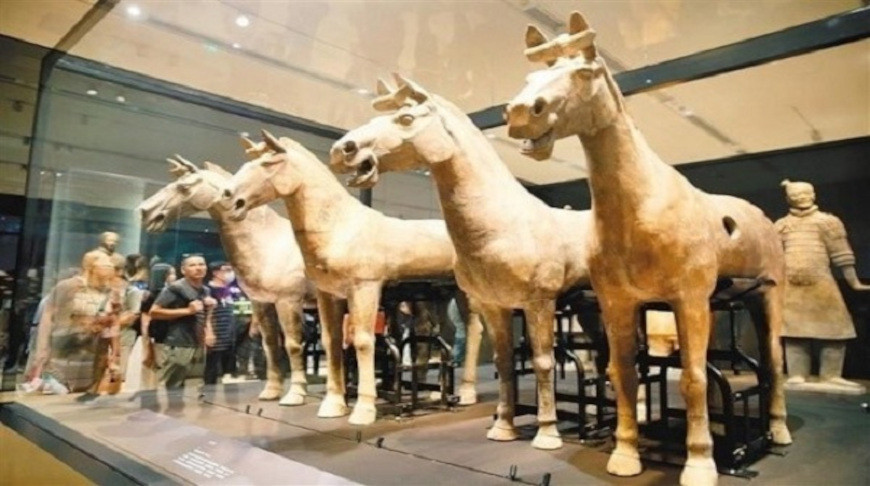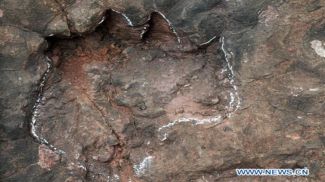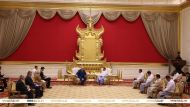
BEIJING, 9 January (BelTA - China Daily) - The exhibition "Buried
History and Mystery of China's First Emperor: Archaeological Discoveries
at the Mausoleum Complex of China's First Emperor" at Emperor
Qinshihuang's Mausoleum Site Museum was included in China's 2024 list of
the top 100 most popular cultural heritage exhibitions. It is one of
four from Shaanxi province to make the list.
The result was announced at the recently held Cultural Heritage Night, organized by 11 institutions, including CCTV Video, Weibo Heritage, and Tencent's SSV Digital Culture Lab. The event selected 100 exhibitions based on museum submissions, monthly top picks from the cultural sector, and recommendations from audiences, experts, and the media.
The exhibition opened on Sept 8, 2024, to celebrate the 50th anniversary of the discovery of the Terracotta Warriors and Houses. It showcases 230 artifacts across eight sections, including the emperor's legacy, the mausoleum's construction, the imperial court, and the underground army.
The exhibition enriches the legacy of the Terracotta Army, offering deeper insights into Qin-era material culture, technological advancements, and institutional systems. It affirms the enduring brilliance of Chinese civilization.
The result was announced at the recently held Cultural Heritage Night, organized by 11 institutions, including CCTV Video, Weibo Heritage, and Tencent's SSV Digital Culture Lab. The event selected 100 exhibitions based on museum submissions, monthly top picks from the cultural sector, and recommendations from audiences, experts, and the media.
The exhibition opened on Sept 8, 2024, to celebrate the 50th anniversary of the discovery of the Terracotta Warriors and Houses. It showcases 230 artifacts across eight sections, including the emperor's legacy, the mausoleum's construction, the imperial court, and the underground army.
The exhibition enriches the legacy of the Terracotta Army, offering deeper insights into Qin-era material culture, technological advancements, and institutional systems. It affirms the enduring brilliance of Chinese civilization.













